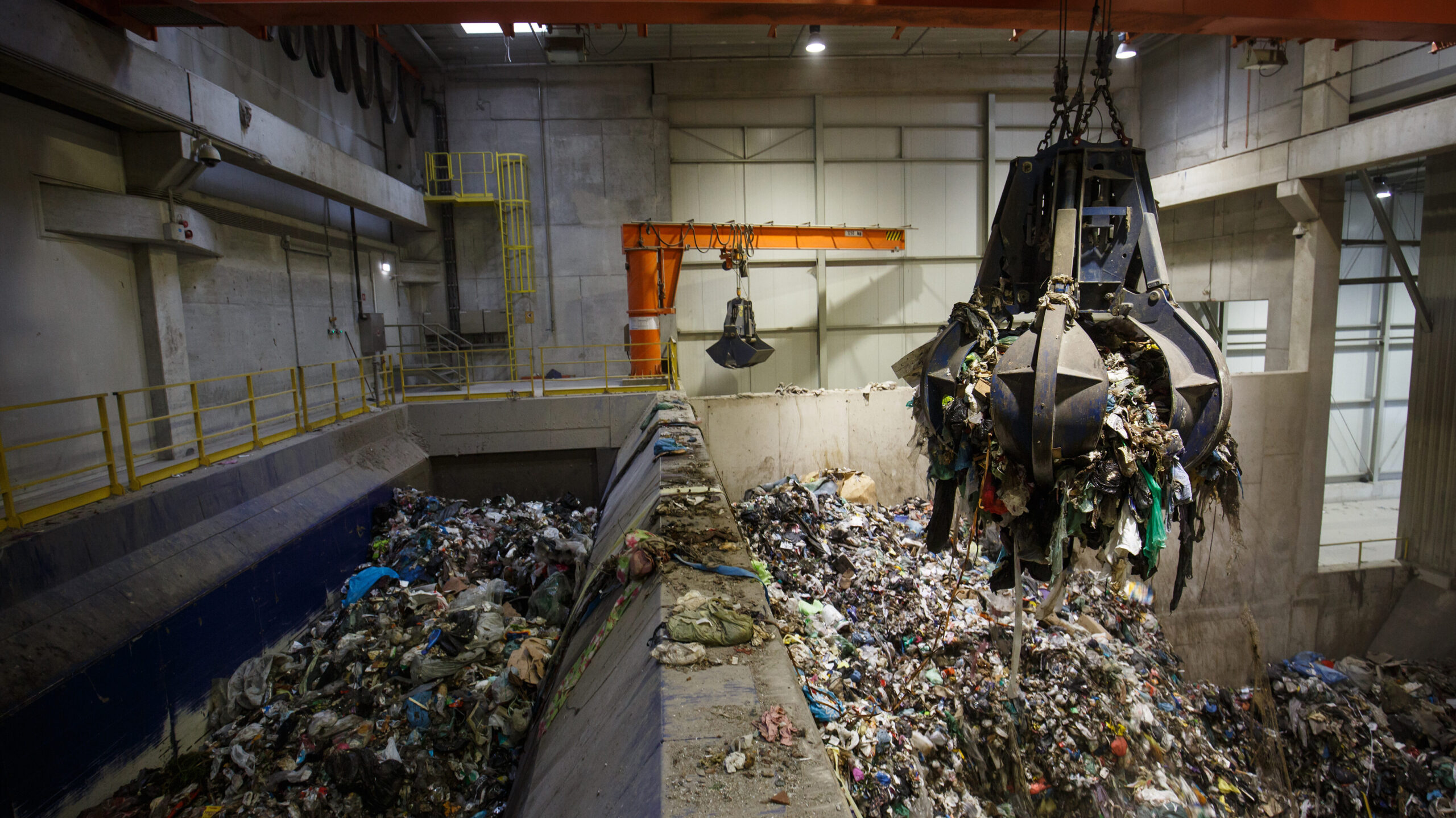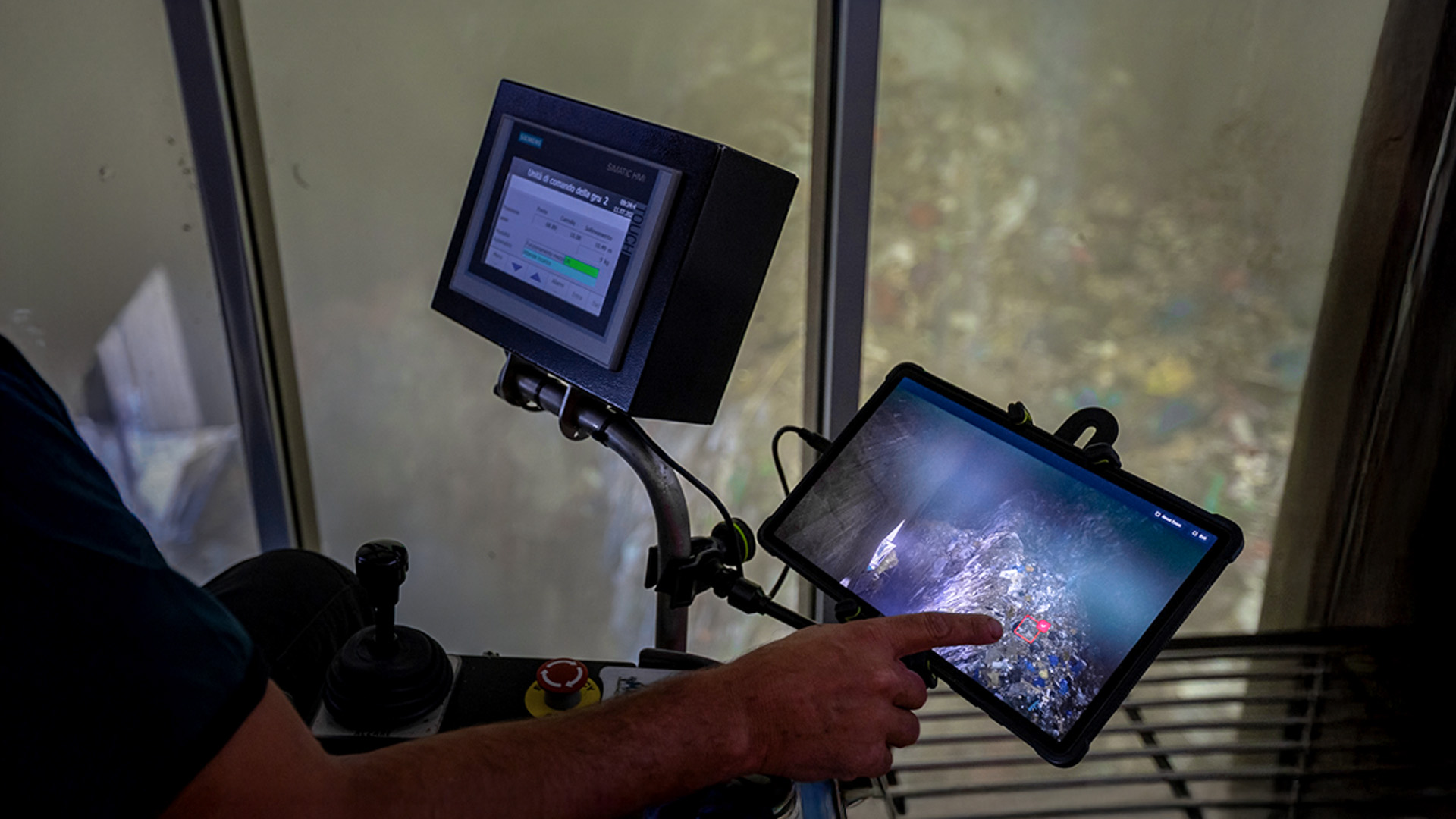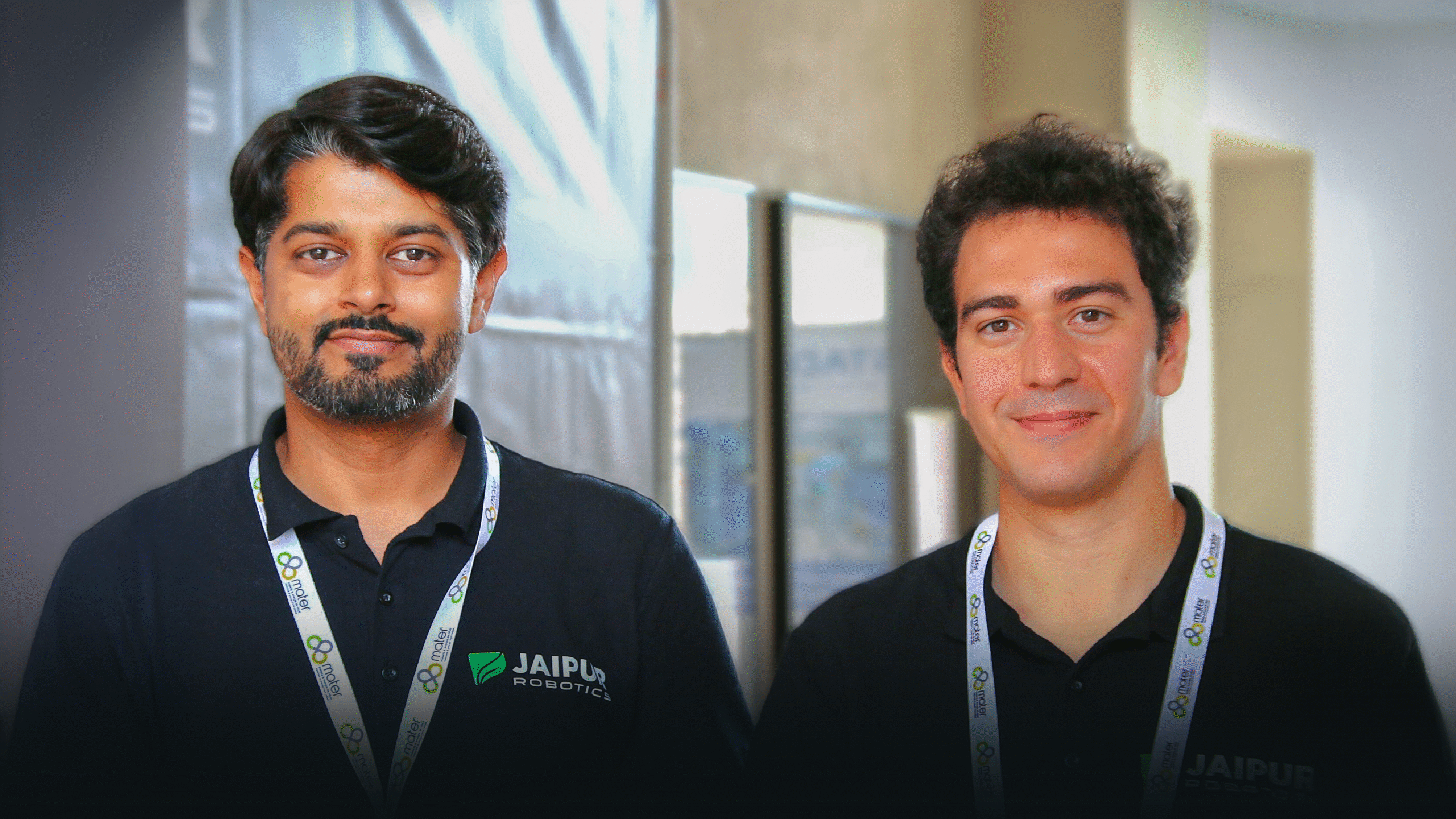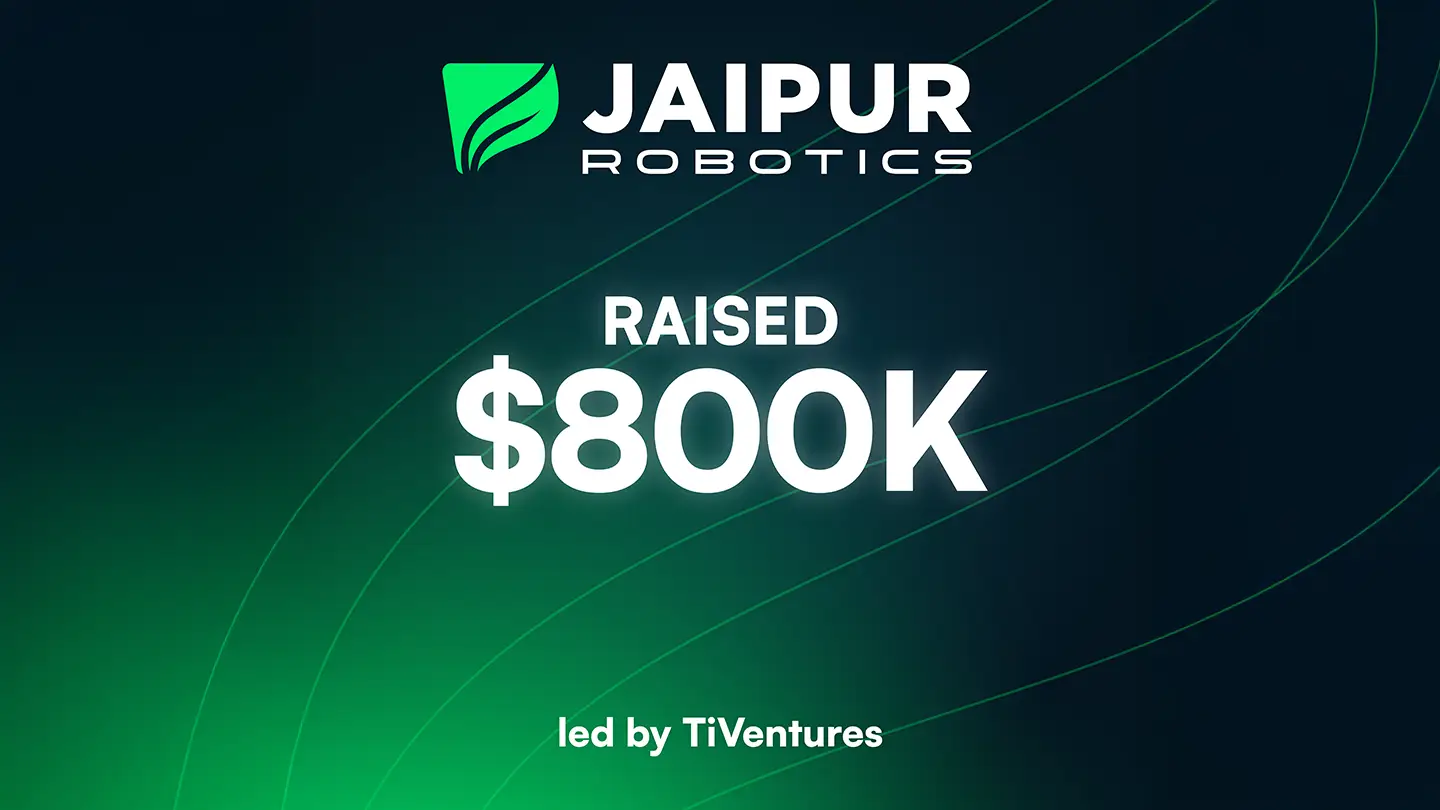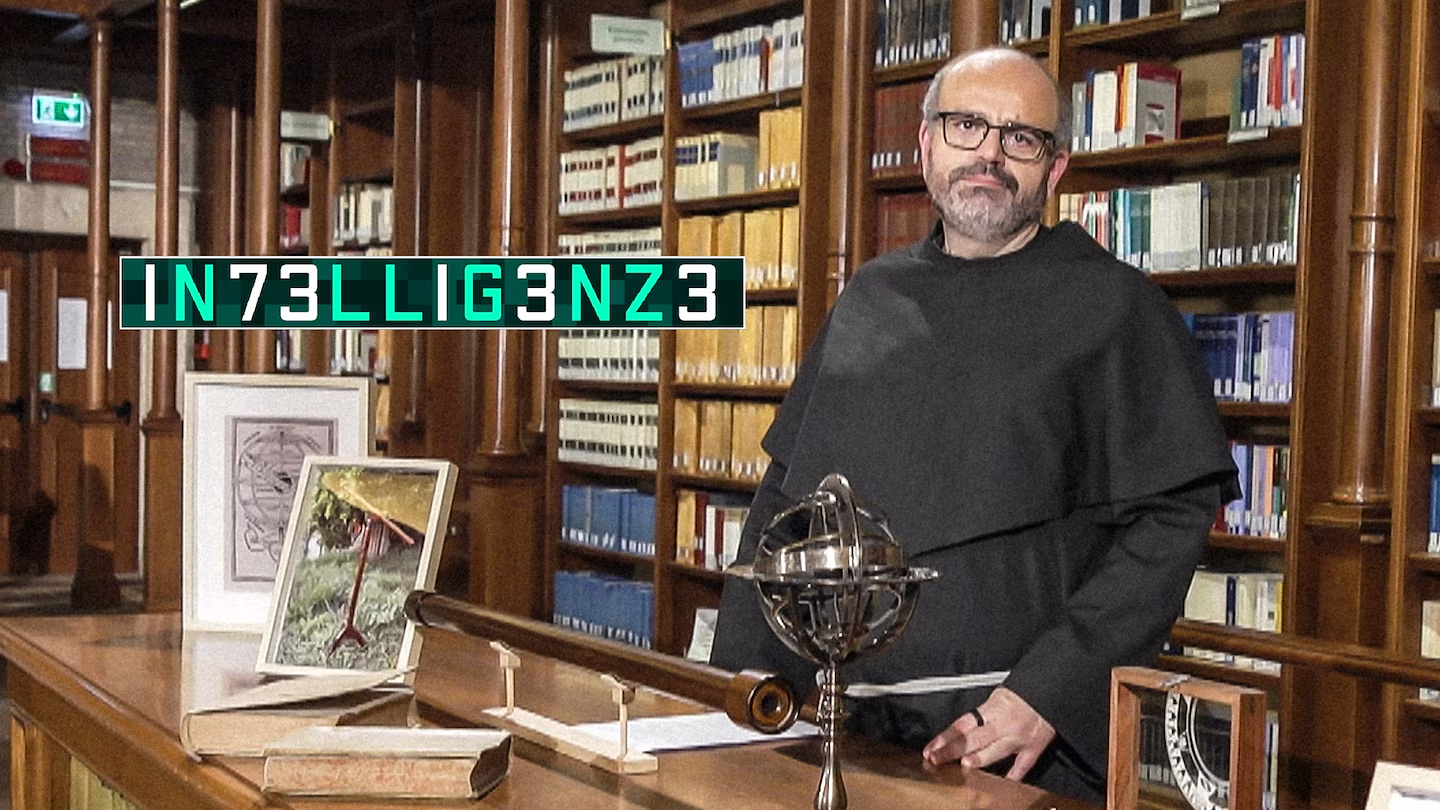Experimentation with the artificial intelligence systems developed by the startup Jaipur Robotics, based at the Tecnopolo in Manno. ‘Non-compliant’ waste can lead to plant shutdowns, causing serious damage.
It’s as tall as a seven-story building, though you wouldn’t guess it from the highway. You have to stand right in front of the Giubiasco waste-to-energy plant – its towering chimney, the shiny cladding on its exterior walls, and the massive ‘mouths’ that throughout the day receive a constant flow of trucks loaded with waste – to truly grasp what this structure is. Or rather, what this industrial facility is: one that literally burns 180,000 tons of waste per year, and at the same time uses the heat released to generate electricity and hot water for district heating in the surrounding neighborhoods.
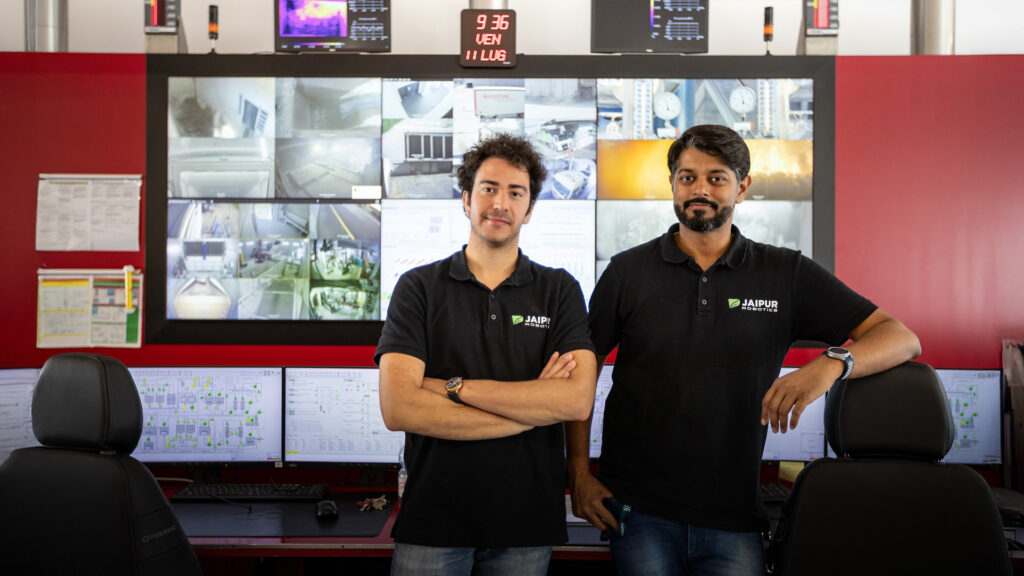
The waste-to-energy plant has something of a “dystopian” feel on the outside – and in large parts of its interior too. You walk through concrete corridors, pass doors that open only with authorized badges, and step into vast spaces filled with long rows of pipes and machines filtering exhaust fumes. But then, as you reach the upper floors, the scene shifts – suddenly resembling an illustration from Dante’s Divine Comedy, as imagined in the famous engravings by Gustave Doré.
Because there, you’re looking into a massive pit, about twenty meters deep, where waste is continuously dumped by arriving trucks. A yellowish light fills the space, making the piles of garbage resemble some strange, mysterious vegetation.
From behind a large glass wall, a specialized operator sorts the waste using a mechanical “claw” with six steel arms – controlled by a kind of joystick. The waste is spread and mixed evenly, to ensure optimal combustion once it reaches the plant’s two incinerators, which operate at around 850°C. When everything works properly, the waste is completely burned, leaving only a small amount of ash and inert residues. But to keep this cycle running smoothly, the plant must not be “disrupted” by abnormal or hazardous waste, which can trigger multiple safety systems, even causing a full automatic shutdown.
Hansjörg Ittig, the plant’s director, confirms: “If unsuitable materials arrive and we can’t detect them quickly enough, serious problems can arise.” But how do hazardous items end up in regular household waste? “It happens, unfortunately, out of negligence,” Ittig explains, “or sometimes because people are in a rush. For example, when a construction site closes, some just throw away unsuitable materials without following proper disposal procedures, to save time. But it also happens in simpler ways – people toss worn-out electrical devices into regular garbage bags.”
If one of the plant’s two incineration lines shuts down, it takes about 24 hours to bring it back online – which means 250 tons of waste cannot be processed that day. And that’s a problem, because the Giubiasco facility runs at full capacity, with no room for delays.
Why does it take 24 hours? “At least five to six hours are needed just to cool down the furnace,” explains Ittig. “Then a team of specialized technicians has to go in, wearing protective suits and masks, to recover the irregular waste that caused the issue. It takes at least five people working for three to four hours – they clean, remove residue, cool the area with air and water, and use belts and mechanical shovels. It’s tough work, but absolutely essential. Finally, it takes another five to seven hours to bring the furnace back up to operating temperature.”
The Giubiasco plant receives all non-recyclable municipal solid waste from Canton Ticino and the Mesolcina region (while plastics, glass, paper, and aluminum – if sorted – follow other recycling paths). It also handles non-toxic, non-hazardous waste from industrial sites, construction works, and businesses – these undergo pre-treatment to remove recyclable plastics, wood, and any materials unsuitable for combustion. However, toxic waste is not processed in Giubiasco. That goes to dedicated facilities in the German-speaking part of Switzerland.
To reduce the risk of shutdowns (which, according to Ittig, happen four times a year on average – with high costs and lost energy production), the plant is equipped with numerous cameras that technicians monitor constantly. But since 2024, an innovative monitoring system has also been in place – one that uses artificial intelligence to detect abnormal waste in real time. The system alerts operators via a monitor, giving them the chance to remove the suspicious materials with the mechanical claw before they reach the furnace.
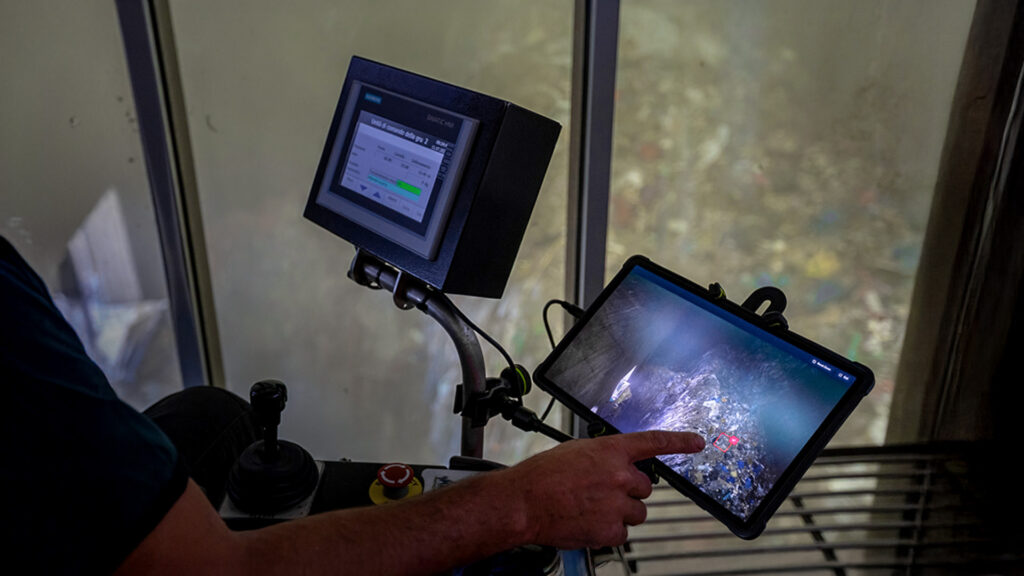
This system was developed by Jaipur Robotics, a startup based at the Tecnopolo in Manno, which signed a contract last year with the Cantonal Waste Agency (which owns the plant) to begin testing. “Together with Jaipur,” adds Ittig, “we’re developing a system using infrared cameras, too, to detect not only the shape but also the temperature of suspicious objects. That’s a huge help for safety, since some hot materials can trigger malfunctions or even pose risks.”
Ermes Zamboni, 28, co-founder of the startup along with 34-year-old Indian engineer Nikhil Prakash, confirms: “For the first time in Europe, we’ve trained an AI model capable of monitoring waste as it’s unloaded into the pit by trucks – sending instant alerts to crane operators when potentially hazardous or suspicious materials are detected. In addition, the system can deliver a precise and complete mapping of the calorific value of the waste across the entire pit. This helps operators mix materials more effectively before they enter the combustion chambers. This solution is the first of its kind in Switzerland and represents a pioneering innovation. Our advanced computer vision algorithms have shown they can reduce unexpected shutdowns by at least 80%.”
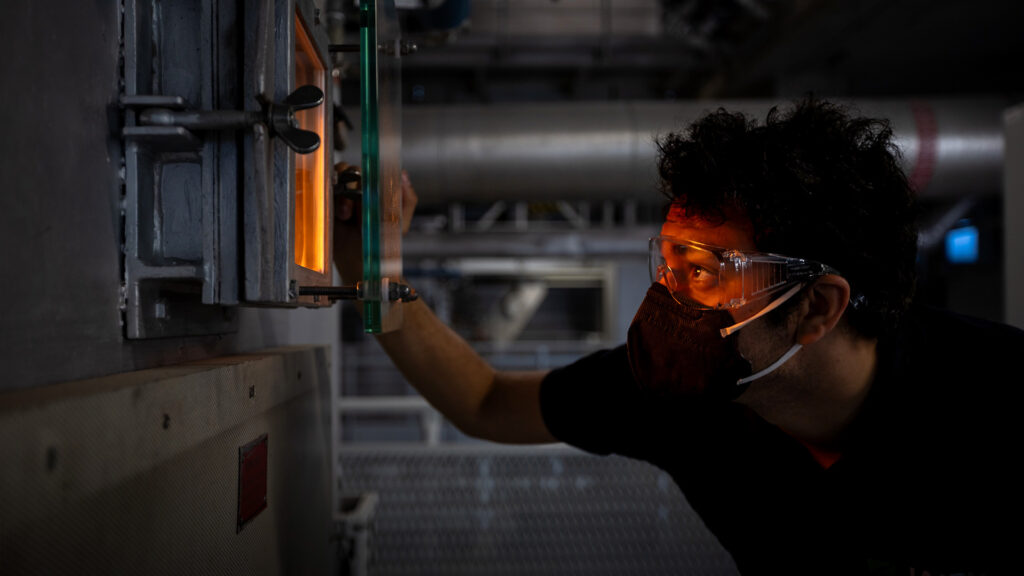
Jaipur Robotics’ technology – winner of the 2024 Grand Prix Möbius Suisse – has also won the confidence of investors. During its first (pre-seed) funding round, the startup raised one million Swiss francs, with the main investor being TiVentures SA, a public venture capital firm owned by the BancaStato Centenary Foundation. “These funds will help us further develop our project and expand the team with new hires,” says Zamboni, who was included this year in Forbes Italy’s list of the Top 30 Under 30 in technology.
But let’s return to the Giubiasco facility. When everything runs as it should – what comes out of that chimney, clearly visible from the nearby neighborhoods? “We have multiple flue gas filtering systems,” explains Ittig. “Chemical scrubbers to capture acids and heavy metals, a catalyst to reduce nitrogen oxides, and a baghouse filter to trap fine dust and micro-pollutants. The system is extremely sophisticated and guarantees clean emissions.”
In the past, things were very different. These plants (which used to be mere incinerators, not energy and heat producers) were widely criticized across Europe. “Yes,” Ittig confirms. “Thirty years ago, the technology was completely different. The old plants had only electrostatic filters, which weren’t very effective. Today, the regulations are much stricter, and the technology has changed radically.”
This article was originally written in Italian by Elisa Buson and published on Ticino Scienza.
Read the original version here: https://www.ticinoscienza.ch/it/news.php?telecamere-a-raggi-infrarossi-e-algoritmi-cosi-e-possibile-scovare-rifiuti-sbagliati-nel-termovalizzatore

